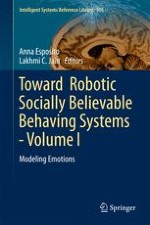2016 | OriginalPaper | Buchkapitel
5. Social Development of Artificial Cognition
verfasst von : Tony Belpaeme, Samantha Adams, Joachim de Greeff, Alessandro di Nuovo, Anthony Morse, Angelo Cangelosi
Erschienen in: Toward Robotic Socially Believable Behaving Systems - Volume I
Aktivieren Sie unsere intelligente Suche, um passende Fachinhalte oder Patente zu finden.
Wählen Sie Textabschnitte aus um mit Künstlicher Intelligenz passenden Patente zu finden. powered by
Markieren Sie Textabschnitte, um KI-gestützt weitere passende Inhalte zu finden. powered by
